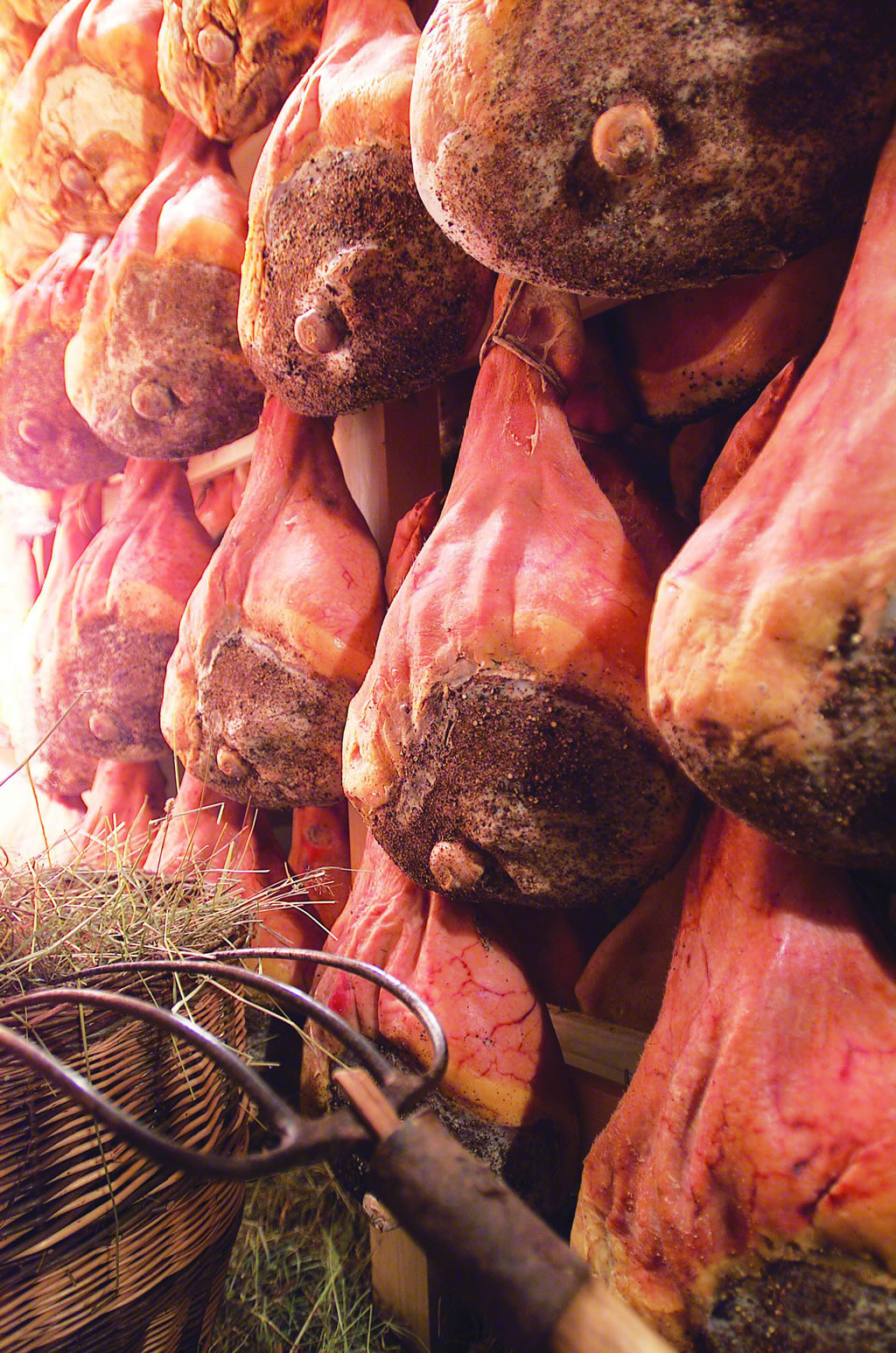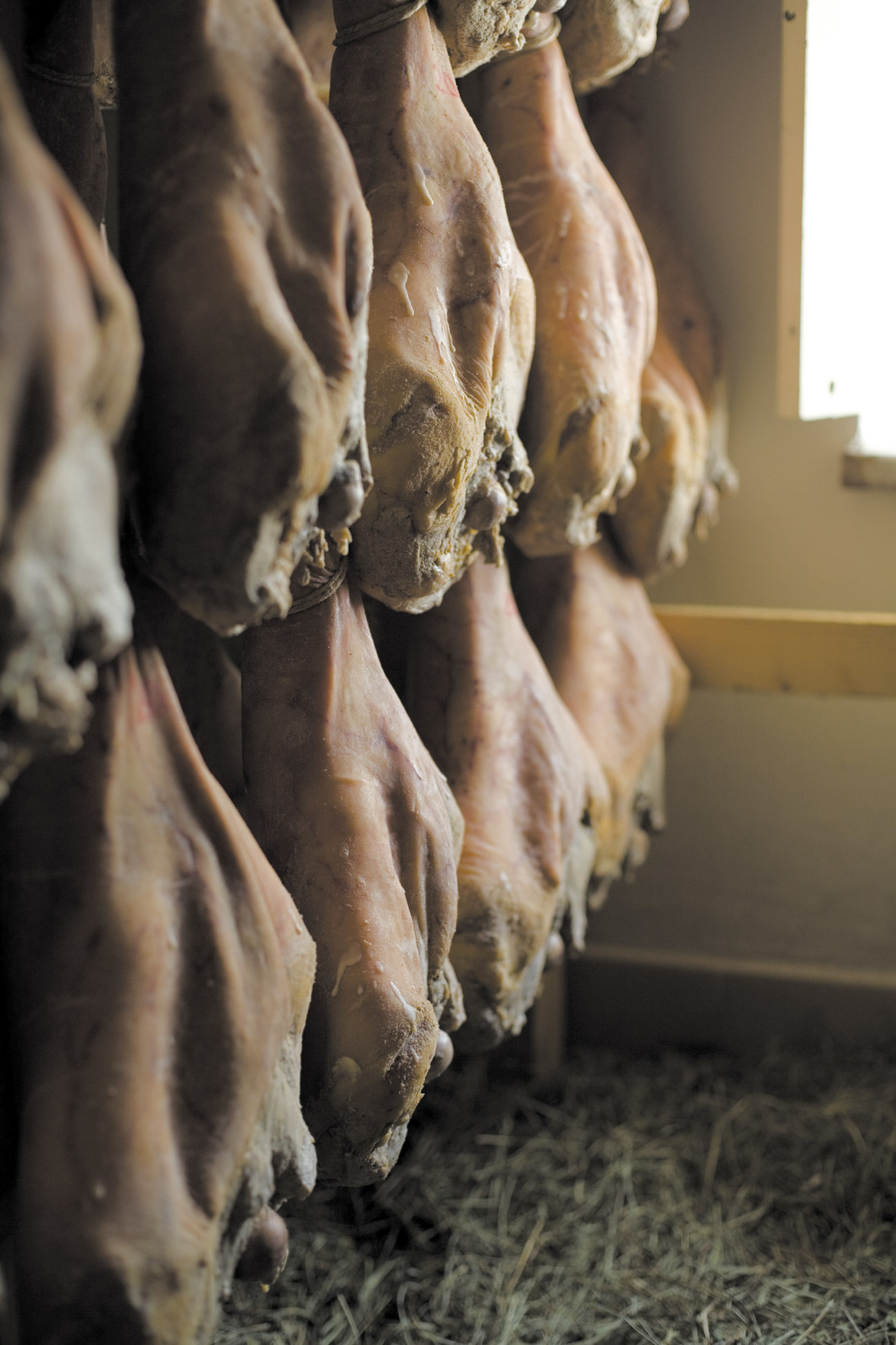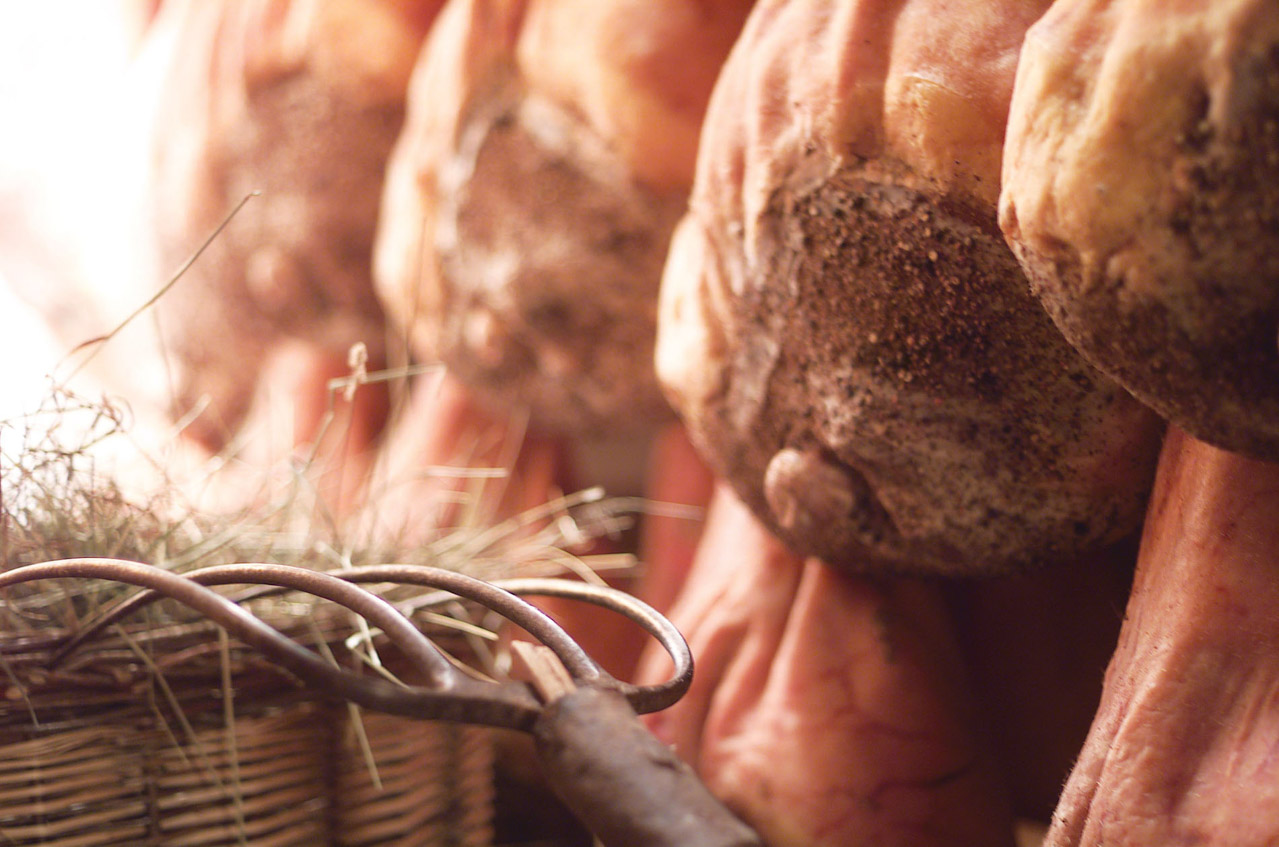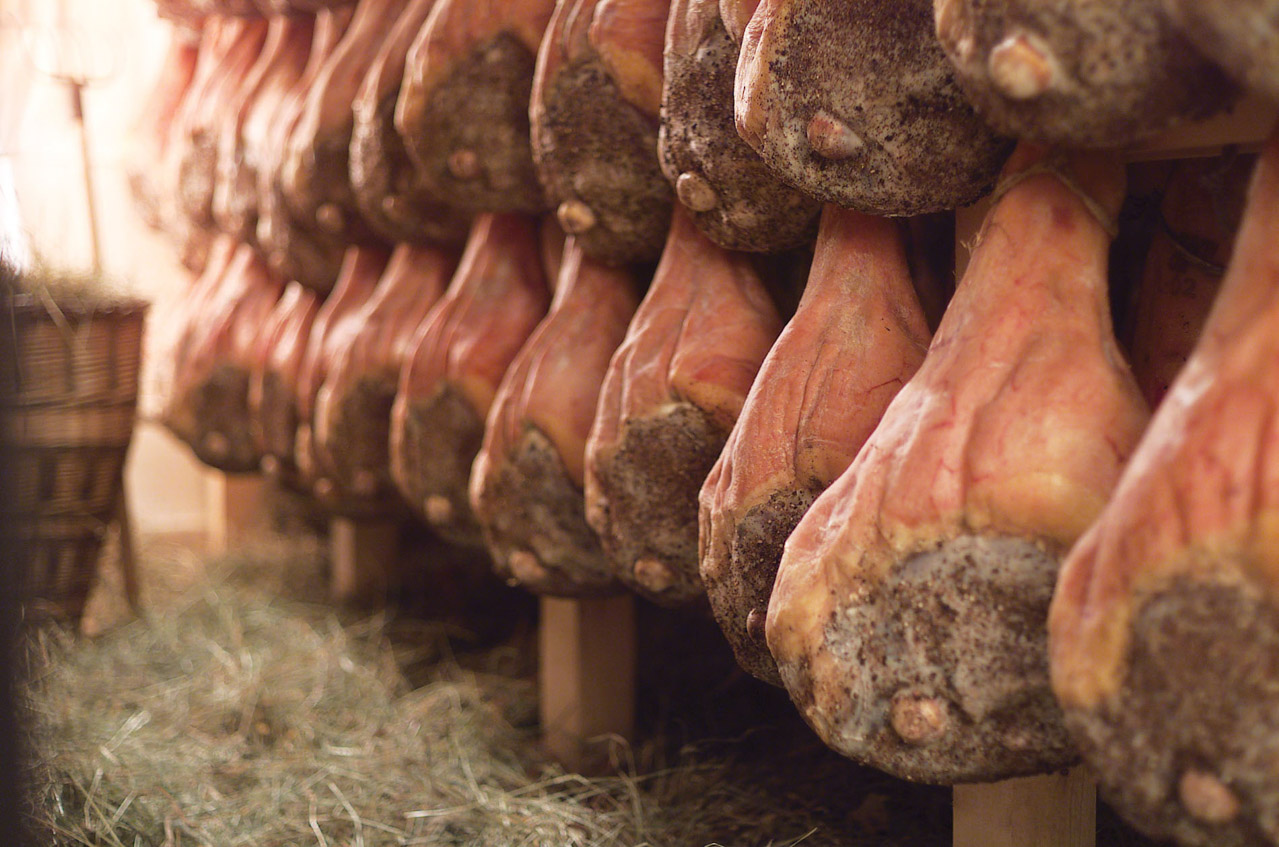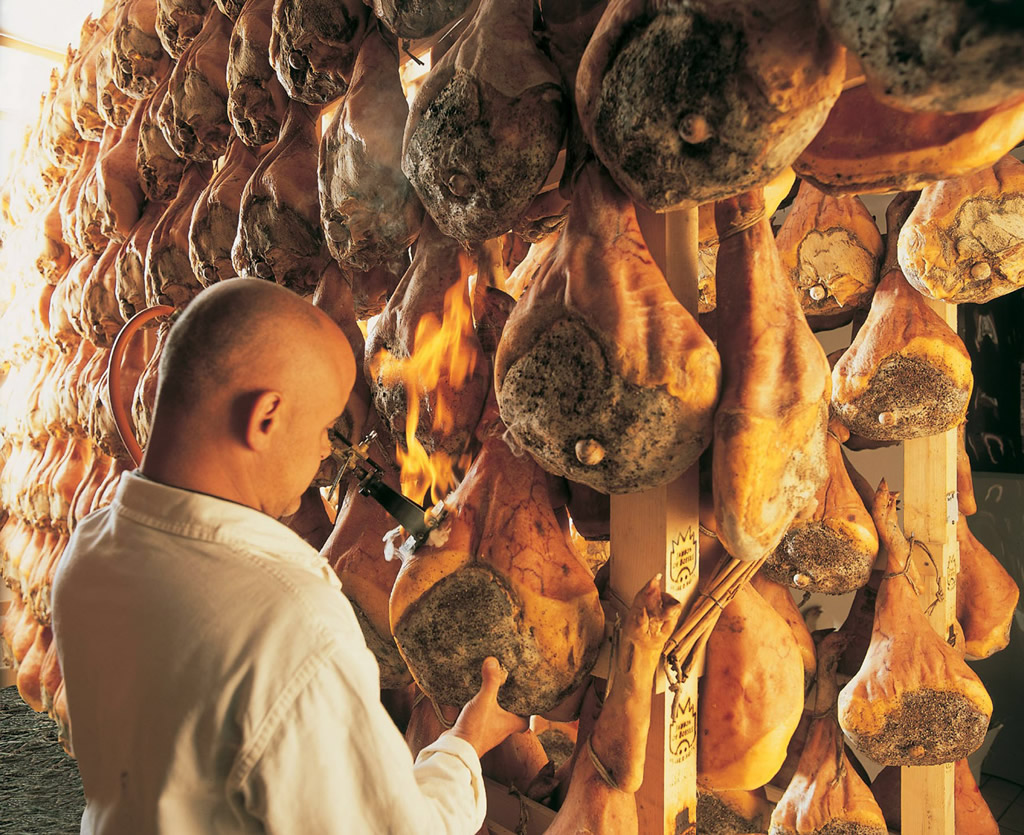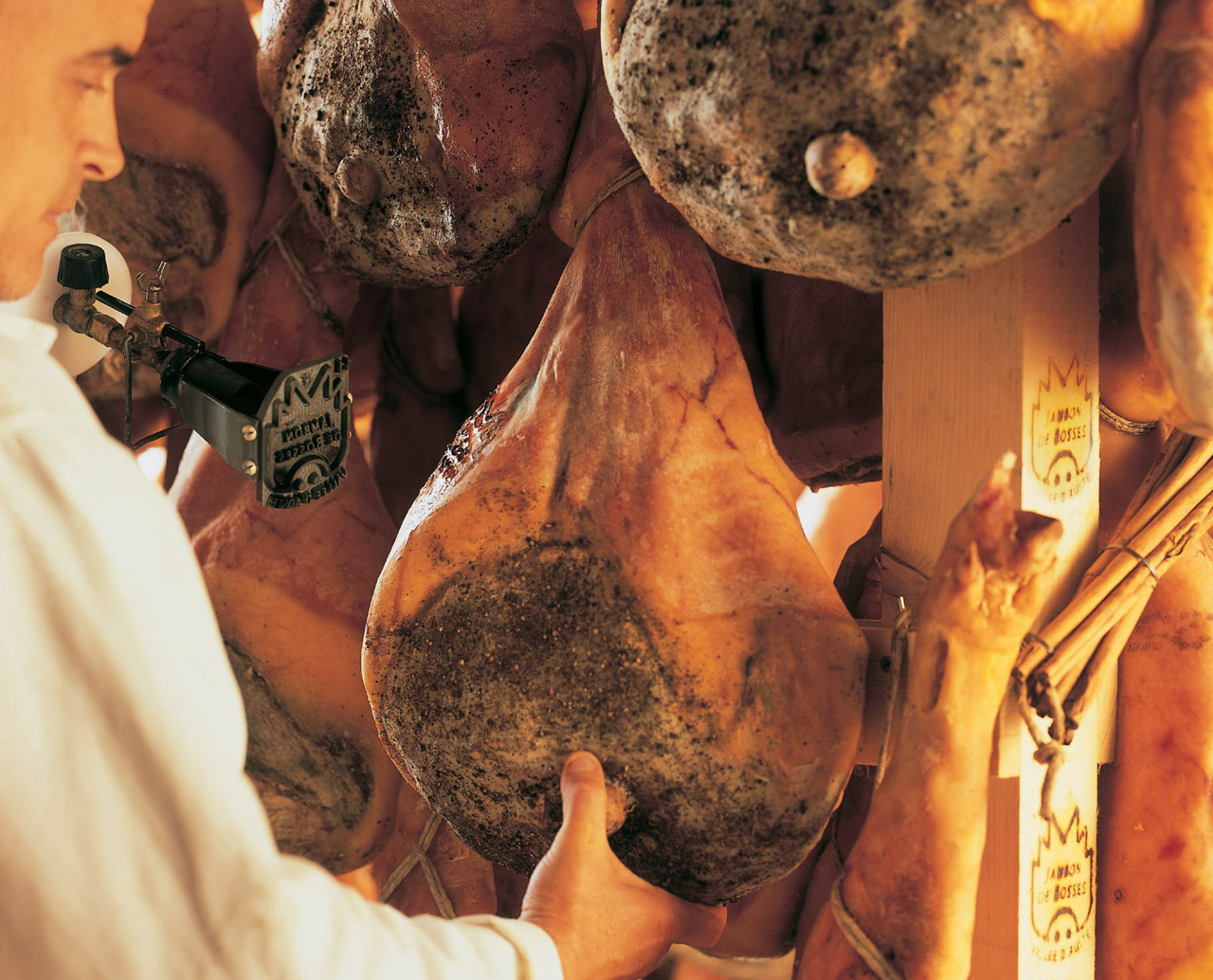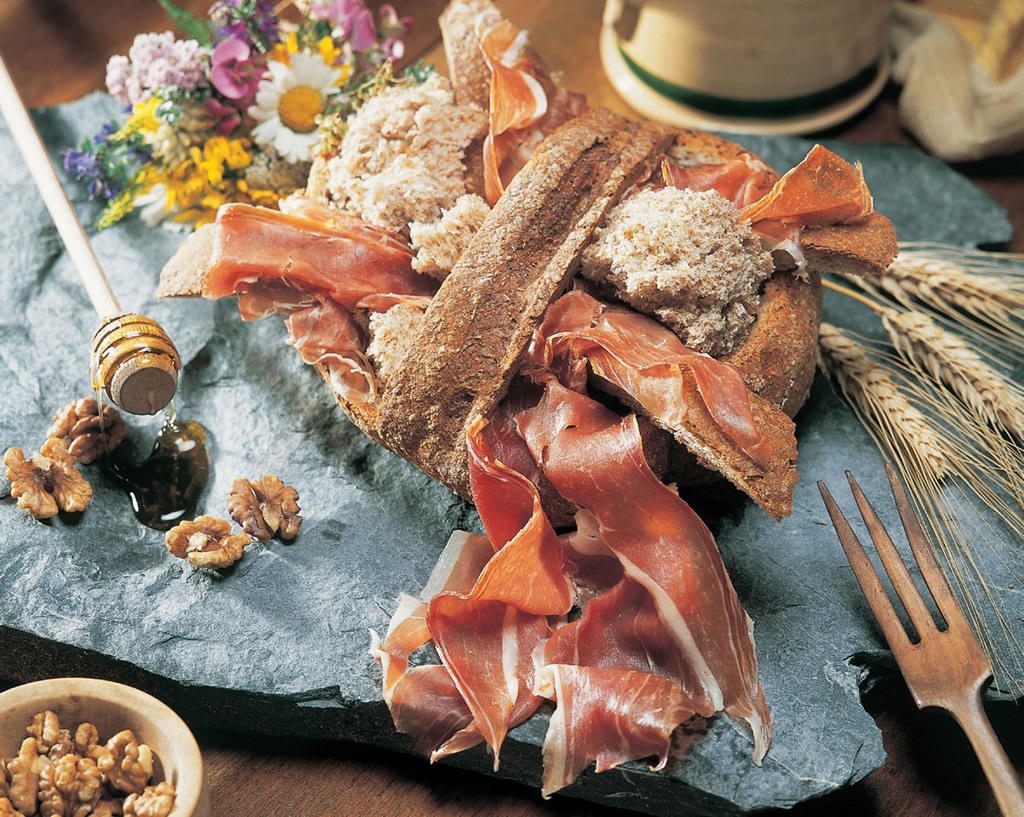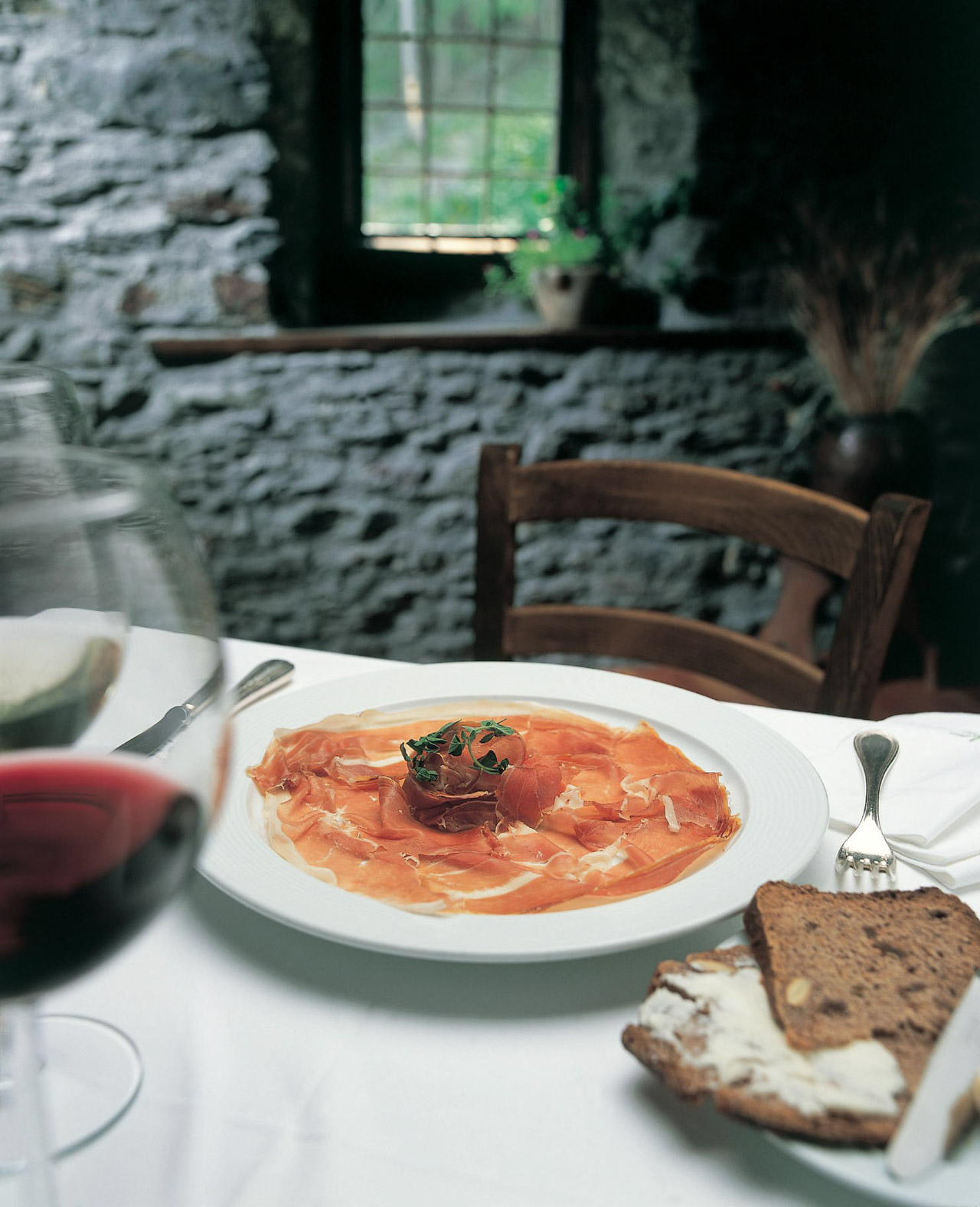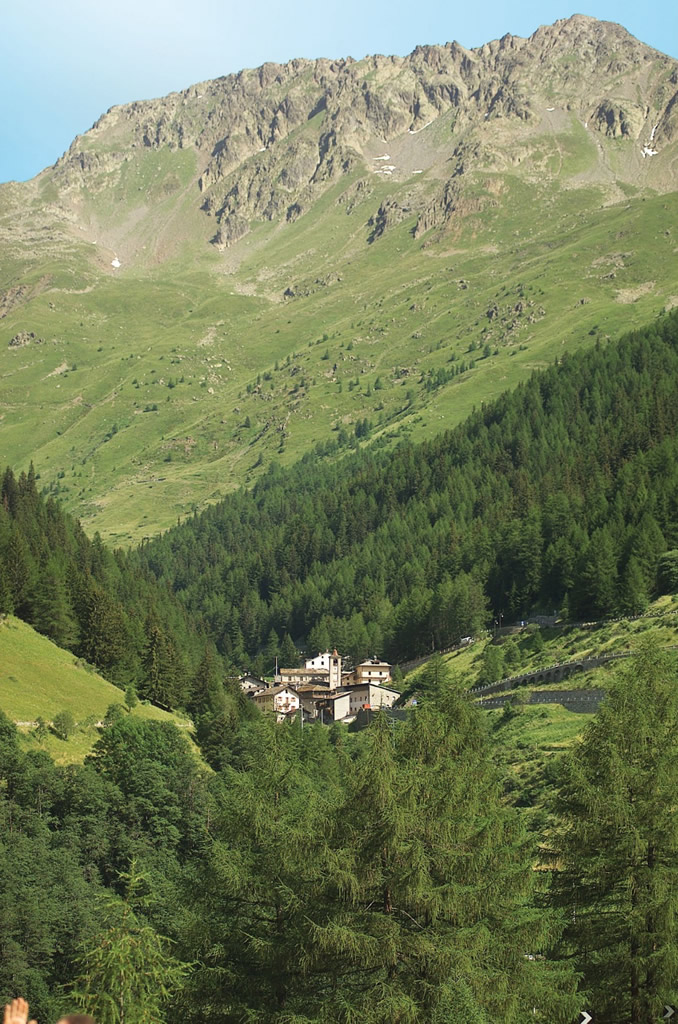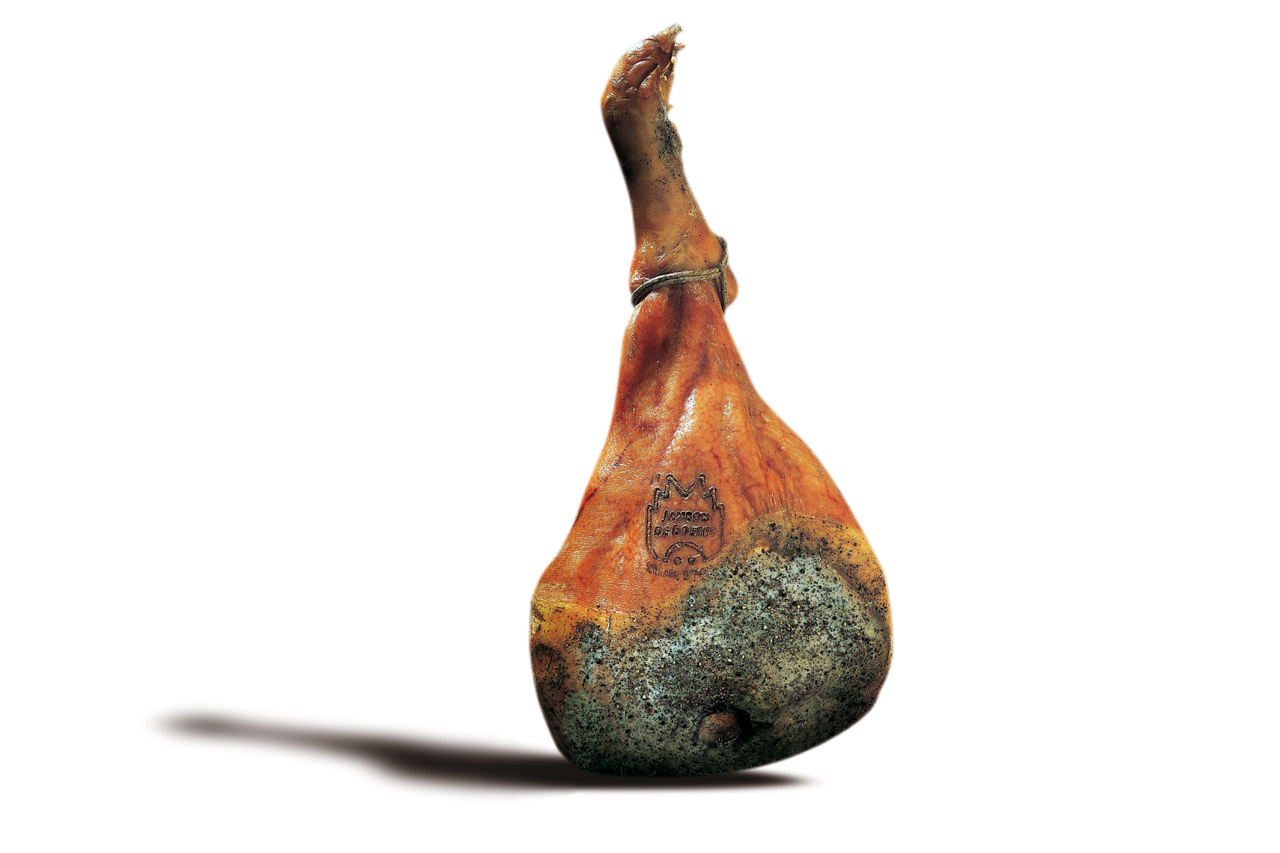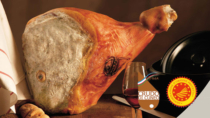Description
Vallée d’Aoste Jambon de Bosses PDO is a raw and cured charcuterie product, obtained through the processing of fresh pig legs from animals belonging to the Large White, Landrace and Italian Duroc breeds.
Production Area
The production area of Vallée d’Aoste Jambon de Bosses PDO is within the territory of the Municipality of Saint Rhémy-en-Bosses, situated at a height of 1600 m.a.s.l., in the Valle d’Aosta region. The pigs used for production are born, reared and slaughtered in the regions of Valle d’Aosta, Piedmont, Lombardy, Veneto and Emilia-Romagna.
Production Method
The selected legs are first refrigerated and then trimmed of the fat and excess rind. After 24 hours they are dry salted; salting takes place in temperature-controlled environments for ten months of the year, only excluding the hottest months. As well as salt, the other ingredients are: ground pepper or pepper corns, sage, juniper, rosemary, thyme, garlic and bay leaf. During this period the meat is massaged in order to promote the expulsion of serum and blood. It is left to rest and cure for 15-20 days, in cool environments, a humid cellar, a hayloft, or in the “prosciutto room” that can be found in every mountain hut. During this stage the ham is also washed and left to dry. The top of the femur and the exposed muscular surfaces are covered with roughly ground pepper to avoid oxidisation. The curing process lasts for a minimum period of 12 months, but also as long as 30 months, although a large part of the hams are cured for 14-18 months. At the end of this process, hams which pass the rigorous controls are fire-branded with the product mark.
Appearance and Flavour
Vallée d’Aoste Jambon de Bosses PDO weighs at least 9 kg; it has a semi-pressed shape and comes with the trotter, which must be at an angle of at least 30 degrees to make the product even more recognisable. The leg is tied with a cord that passes through a hole in the top part of the leg. The rind is straw-yellow in colour, smooth on the exterior and wrinkled on the inner side of the leg. The slice is wine-red; the lard is firm and shiny, at times with pink hues on the outside. It has a delicate and slightly salty taste, with a touch of sweetness, an aromatic flavour and a delicate gamey note.
History
The first credible information on the production of Vallée d’Aoste Jambon de Bosses is found in the Contes de l’Hospice du Grand-Saint-Bernard, 1397, where the tybias porci produced in the area of Saint-Rhémy-en-Bosses are specifically mentioned. The product’s fame spread quickly: the Great St Bernard Pass was one of the most used alpine passes, and in the late Middle Ages it became the main route for trade with Western Europe.
Gastronomy
Whole Vallée d’Aoste Jambon de Bosses PDO hams are best kept in a cool place, and once opened the sliced end should be basted with oil and wrapped in cling film or foil. Vallée d’Aoste Jambon de Bosses PDO is best served in very thin slices (preferably sliced by hand) with the traditional black bread. It is also excellent when paired with mountain butter, honey and walnuts.
Marketing
The product is marketed as Vallée d’Aoste Jambon de Bosses PDO or Valle d’Aosta Jambon de Bosses PDO. It is sold whole, in pieces or sliced, vacuum-packed or in modified atmosphere packaging.
Distinctive Features
Vallée d’Aoste Jambon de Bosses PDO is cured in cool environments, such as rascards (typical highland wooden constructions), inside which the hams are kept close to local hay that is regularly turned and replaced.








